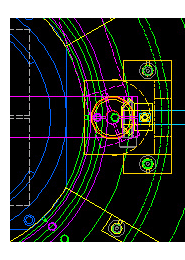We have structured the activities to emphasize collaborative learning. As future teachers,
researchers, and technical managers, you will need to know how to help colleagues,
coworkers, employees, and students master complex material. You will start that process
here. Your participation as a teacher/trainer in this course is as important as your role as
student/trainee. You will be encouraged to work together on almost everything. Although
there will be some background reading to do, most of the learning will take place in the
form of activities. Compared to the typical course, this course will involve much more "class"
time and somewhat less time outside of class.  We encourage people to make themselves
available to their peers by spending some extra time in the lab (without food!). Feel free to
hang out, but be ready to give up your space if a working group or team needs it for some
reason. We encourage people to make themselves
available to their peers by spending some extra time in the lab (without food!). Feel free to
hang out, but be ready to give up your space if a working group or team needs it for some
reason.
As professor and TA for this course, we serve four purposes: (1) As facilitators. We are
here to make sure you have all resources necessary to do the activities and learn the material.
This includes making sure the software works, the hardware is there, the materials are clear
etc. (2) As part of the coaching staff. Along with the other members of the Department and
the Observatory who are making themseleves available, we are a knowledge resource.
You can come to us for advice, for direction to additional people or material, or for help when
you are flat-out stuck. (3) As referees. When there are conflicts between or within teams and
groups over resources or (heaven forfend!) personalities that cannot be resolved satisfactorily
without our help, we are there to deal with them. (4) As evaluators. This is after all a course.
You will get a grade (see below). We also take seriously the part of this role that involves
evaluating the course materials and organization, as well as the performance of the outside
instructors and even ourselves. You need to contribute to this effort by taking your own
evaluating role seriously.
Texts
Building Scientific Apparatus by Moore et al. (3rd edition)
The Art of Electronics by Horowitz and Hill (2nd ed.)
Both of these are great references as well as textbooks. If you have any inkling at all that
you may be around instrumentation in the future, hang onto these books at the end of the
semester!
Suggested Labview References:
LabView for Everyone by Travis (2nd edition)
LabView Graphical Programming by Johnson & Jennings
Segments and Segment Groups
The curriculum for this class has been divided into four segments. Each segment covers an
important aspect of instrument design and construction: mechanical design and fabrication,
electronics and circuit design, optics and optical design, and computer interfacing and
software design. The segments will consist of a reading assignment, a set of problems,
some hands-on skill learning tasks and a laboratory exercise.
The class will be divided into segment groups. Each group will rotate through the segments
in succession. Groups will have 3 weeks to complete each segment. You will do most of the
activites as a group.
|

 We encourage people to make themselves
available to their peers by spending some extra time in the lab (without food!). Feel free to
hang out, but be ready to give up your space if a working group or team needs it for some
reason.
We encourage people to make themselves
available to their peers by spending some extra time in the lab (without food!). Feel free to
hang out, but be ready to give up your space if a working group or team needs it for some
reason.